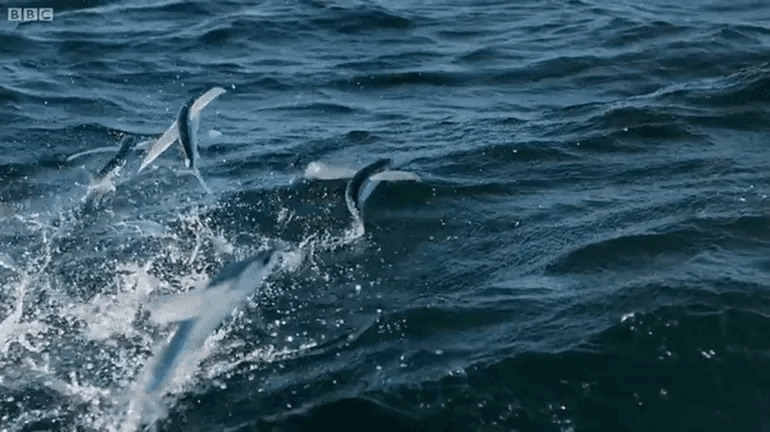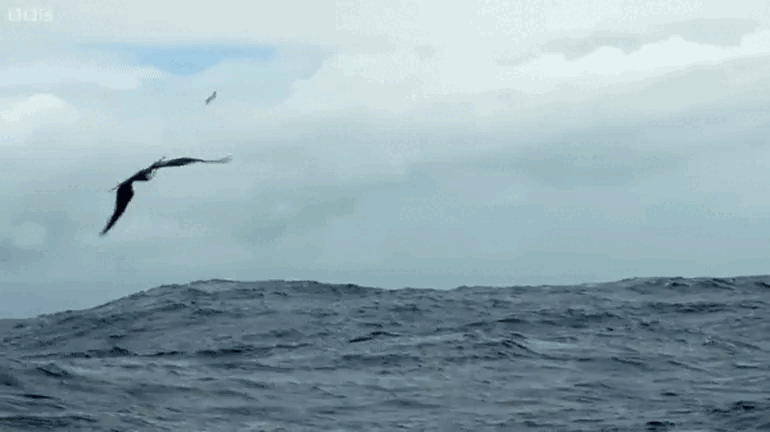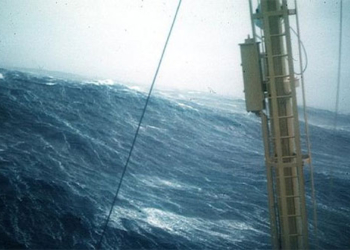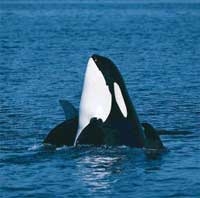The video filmed by BBC filmmakers captures an impressive moment in the survival battle between marine creatures and aerial predators in a warm sea.
It is the moment when the hiding place of a school of flying fish is revealed. They have fallen into the “sights” of the Spanish mackerel. At that moment, escape seems nearly impossible. However, flying fish possess a very special ability. To avoid being preyed upon, they quickly push their bodies up to the surface of the water and “fly” into the air. Thanks to strong winds, they can glide hundreds of meters away.

A school of flying fish “flying” off the surface of the sea to escape the pursuit of Spanish mackerel. (Image captured from the clip).
But before they could “celebrate” their escape, the flying fish were again “spotted” by the seabird. The fish’s leaps into the air are exactly what the seabird has been waiting for.
The seabird’s hunting participation traps the flying fish between two enemies, above and below the water. If the flying fish “fly” too high, they easily become a delicious meal for the seabird. However, if they dive too deep to avoid the aerial predator, the mouth of the Spanish mackerel is waiting below.

However, if they “fly” too high, they easily fall into the “sights” of the seabird. (Image captured from the clip).
Flying fish belong to a family of about 40 species. They are distributed worldwide in warm waters and are notable for their ability to “fly.” This fish is relatively small, reaching a maximum length of about 45 cm, with fins resembling wings.
However, experts indicate that flying fish do not actually know how to fly. Their fins are wing-shaped and sized, but in reality, they only glide just above the water’s surface. They can make multiple “flights” in a single movement. Each time they dive, their tails propel their bodies upward.
Healthy flying fish can “fly” up to 180 meters each time, with total “flight” durations lasting up to 43 seconds, covering a distance of 400 meters. The “flying” ability of flying fish mainly aims to escape from predators, including mackerel, tuna, swordfish, and larger species. Flying fish feed on a variety of food, including plankton.





















































